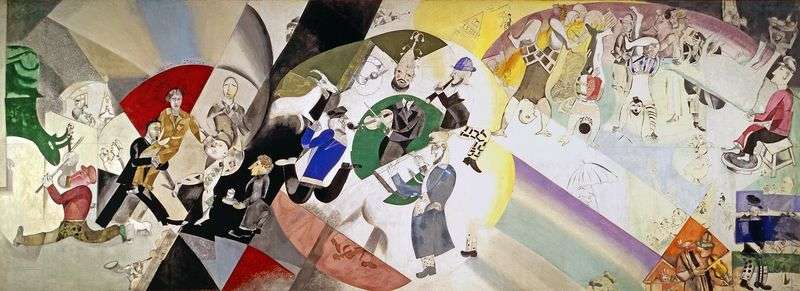
This was the central panel for the organized State Jewish Chamber Theater, which was converted from a manor house. It was 3 m high and 8 m long and was located along the longitudinal wall of the hall.
This is a grandiose Jewish commedia del arte. Chagall places himself as Moses, next to the tablets of the Law. Using a kind of “code”, he creates a multilayered narrative that appears in the form of a parody and grotesque carnival, where “suprematist” geometricism is combined with Jewish iconography. Among the presented images – a violinist with a bouncing head and a clown’s cap; Two clowns walk on their hands, one of them being a devout Jew with a tephilim symbolizing the overturning of the usual Jewish way of life. At the same time, the panel reflects the true features of a truly “Chagall” style, for example, a green cow, typical of many of its paintings, falls from the left. In Yiddish the horns of the cow were denoted, among other things, by playing a musical instrument.
In addition to the central panel, Chagall wrote four more vertical canvases dedicated to the synthesis of the arts, which were located in the piers between the windows.
The panels were filmed in 1923. In 1937 they were hidden behind the stage. In 1950 transferred to the State Tretyakov Gallery. In 1973, they were deployed before Chagall, who came to Moscow, to sign it. First exhibited for the public in Switzerland after the restoration in 1991.
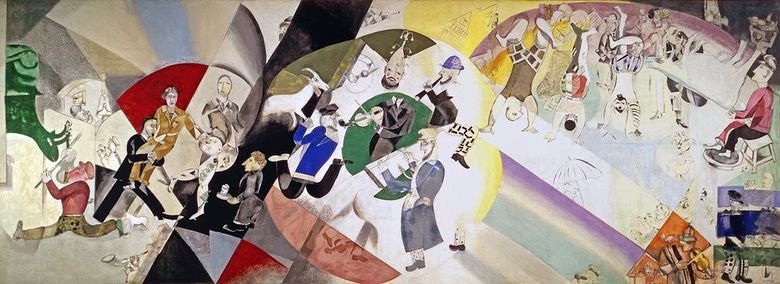 Introduction au nouveau théâtre juif – Marc Chagall
Introduction au nouveau théâtre juif – Marc Chagall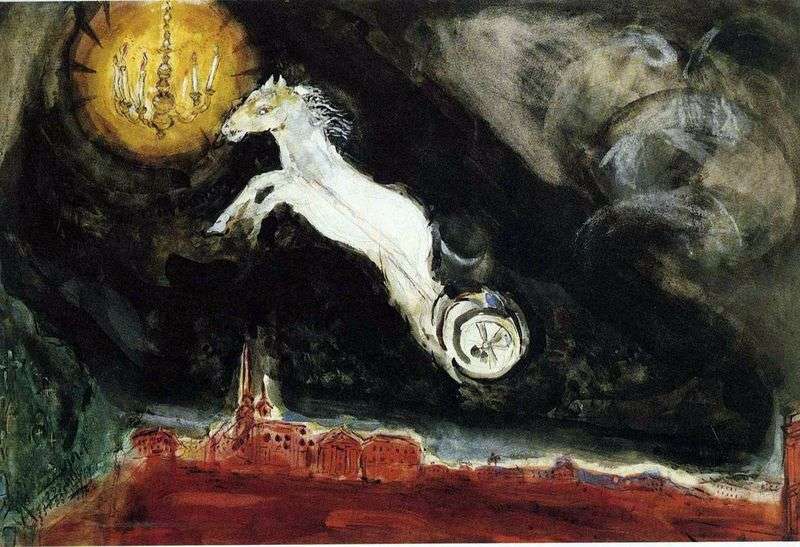 Theater by Marc Chagall
Theater by Marc Chagall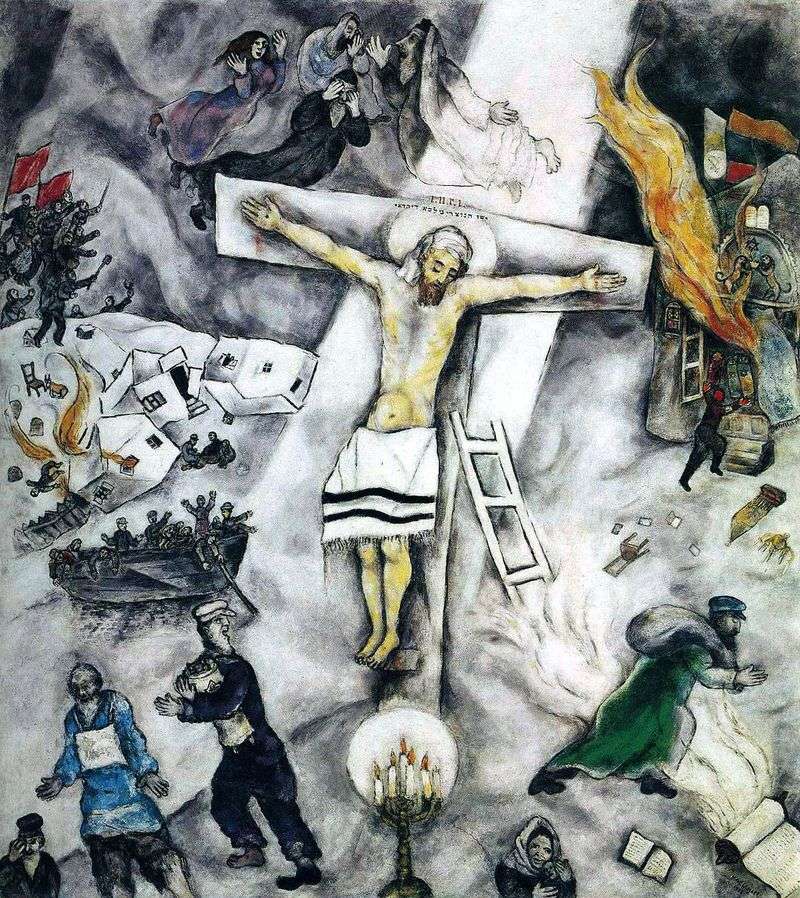 The White Crucifix by Marc Chagall
The White Crucifix by Marc Chagall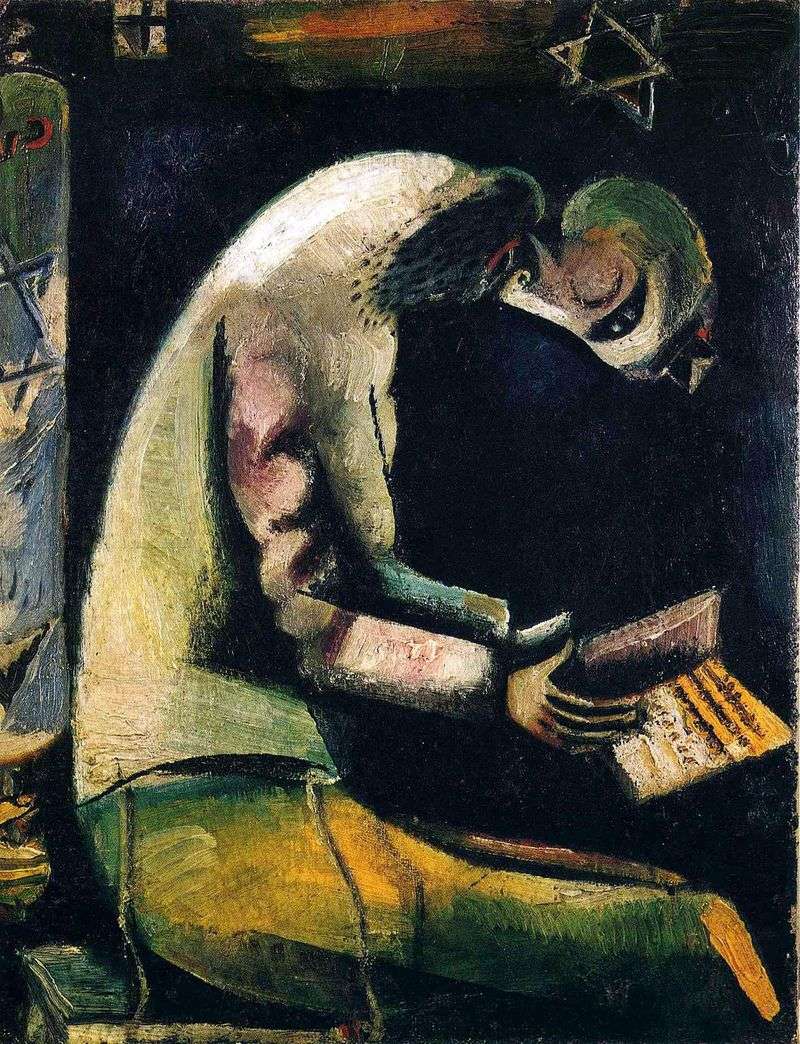 The Jew for Prayer by Marc Chagall
The Jew for Prayer by Marc Chagall Cellist by Marc Chagall
Cellist by Marc Chagall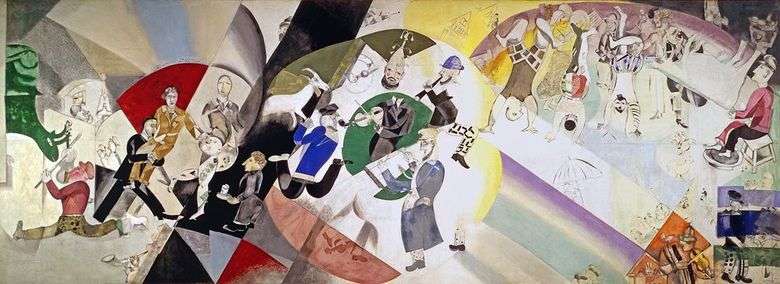 Introducción al Nuevo Teatro Judío – Marc Chagall
Introducción al Nuevo Teatro Judío – Marc Chagall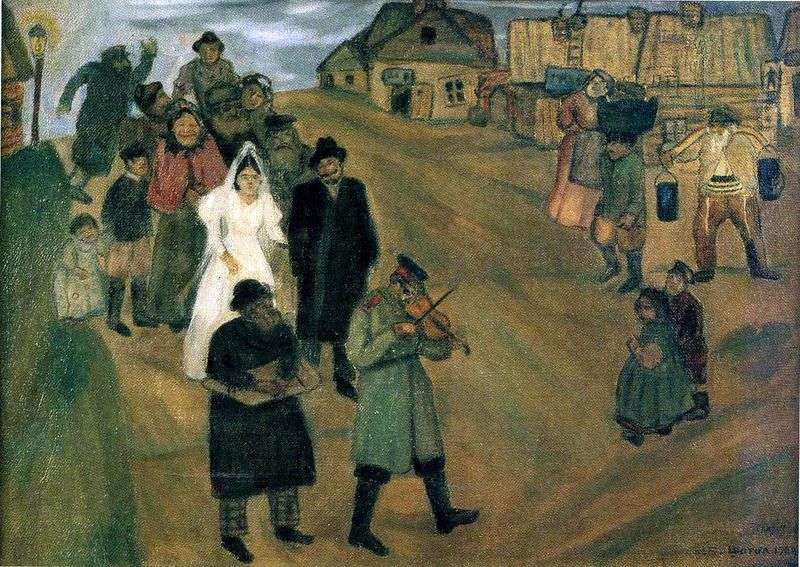 Russian Wedding by Marc Chagall
Russian Wedding by Marc Chagall Green violinist by Marc Chagall
Green violinist by Marc Chagall